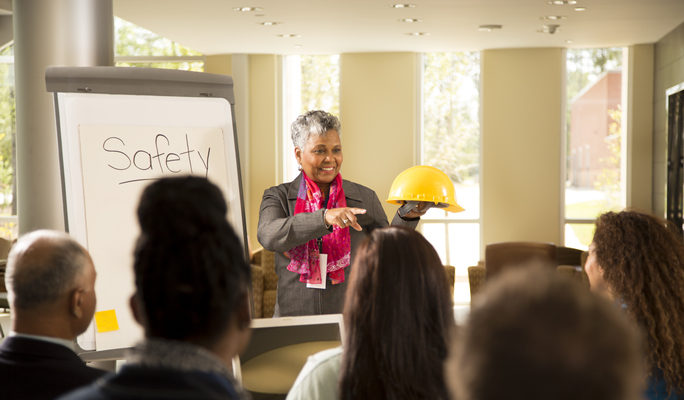Tips to Prioritize Safety and Health in the Workplace
HOW TO PRIORITIZE HEALTH AND SAFETY IN THE WORKPLACE
The Occupational Safety and Health Administration (OSHA), a government organization responsible for ensuring employees have safe working conditions and minimal risk of illness or health issues, has made significant improvements in the past few decades to set standards that make sure people have a reliably safe workplace. Because of research and agencies like these, the United States has made significant improvements in protecting the workforce by putting safety at the forefront of business operations. Worker illnesses and injuries have decreased from nearly 11% in the 1970s to just under 3% in 2017.
No matter how small or large a business or building is, a safe work environment is imperative to protect the workforce. It also makes sense from a financial and efficiency perspective.
Camp Hall offers these tips to keep health and safety at the forefront of workplace culture.
Create procedures and follow checklists
Knowing what to do in an emergency or during an unprecedented situation will help employees react quickly and effectively and creating policies and procedures will also help entire teams stay ahead of things like having appropriate supplies to complete a job safely and effectively, identifying hazards and risks, communicating efficiently and improving productivity. Preparing checklists for instances such as safety inspections, hazard observation, incidents and repair orders helps everyone understand how to adequately take caution and move forward in daily responsibilities.
Encourage frequent breaks
Injuries can occur when employees are too tired and cannot make the most rational decisions about potential dangers and risks. Taking breaks to break up routine activities and responsibilities can help everyone stay safer on the job and keep employees alert and focused on completing tasks to the best of their abilities.
Prevent slips and falls
Slips and falls are the leading causes of job site injury. Simple housekeeping in the workplace can easily prevent mishaps around hazards like slippery floors, cluttered aisles and walkways, improper placement of ladders and exposed ropes and cables.
To safeguard everyone in the workplace, teams should be aware of and take action involving:
- Cleaning up spills quickly
- Using signage that communicates potential dangers
- Tidying areas before, during and after work
- Using proper lighting
- Choosing proper safety gear, tools and equipment for the task
- Inspecting spaces and equipment regularly
Consistently train employees on health and safety
Ingraining health and safety priorities into the entire workforce begins with clear and consistent training for employees on job procedures. Training is an opportunity to create a culture among employees that makes safety a top standard and a habit applied to every aspect of their positions.
There are mandatory regulations from federal and local authorities that must be taught and adhered to, but encouraging a culture of learning, growth, development and safety comes after providing regular education on topics like identifying safety hazards, developing skills, workplace health and leadership communication.
Prioritize healthy air quality and circulation
Air quality and circulation is key in providing a safe and comfortable environment for working. Poor air quality can lead to headaches, irritations, difficulty breathing and poor concentration and not only affect the job being performed, but also the health and quality of life of employees after they get home. Just by having effective air ventilation and circulation, contaminants and potentially dangerous substances in the air can be eliminated, avoiding health problems for anyone coming in contact with the site.
OSHA requires ventilation and restricts the level of pollutants allowed. But facilities can also increase knowledge and awareness around air quality in these spaces by implementing processes around carbon monoxide testing, ventilation system inspection and monitoring supplies used that may emit chemicals and vapors into the air.
The health and safety of employees is just as much a priority for businesses in an industrial park as it is for the employees who work there. A thriving workforce not only creates a strong community, but flourishing and productive companies that can continue to produce at the highest standard to serve others. At Camp Hall, a well-educated workforce is ready in the Charleston area and modern campuses complete with site-ready infrastructure will help your business get up and running quickly, efficiently and safely for all parties.

